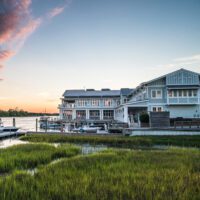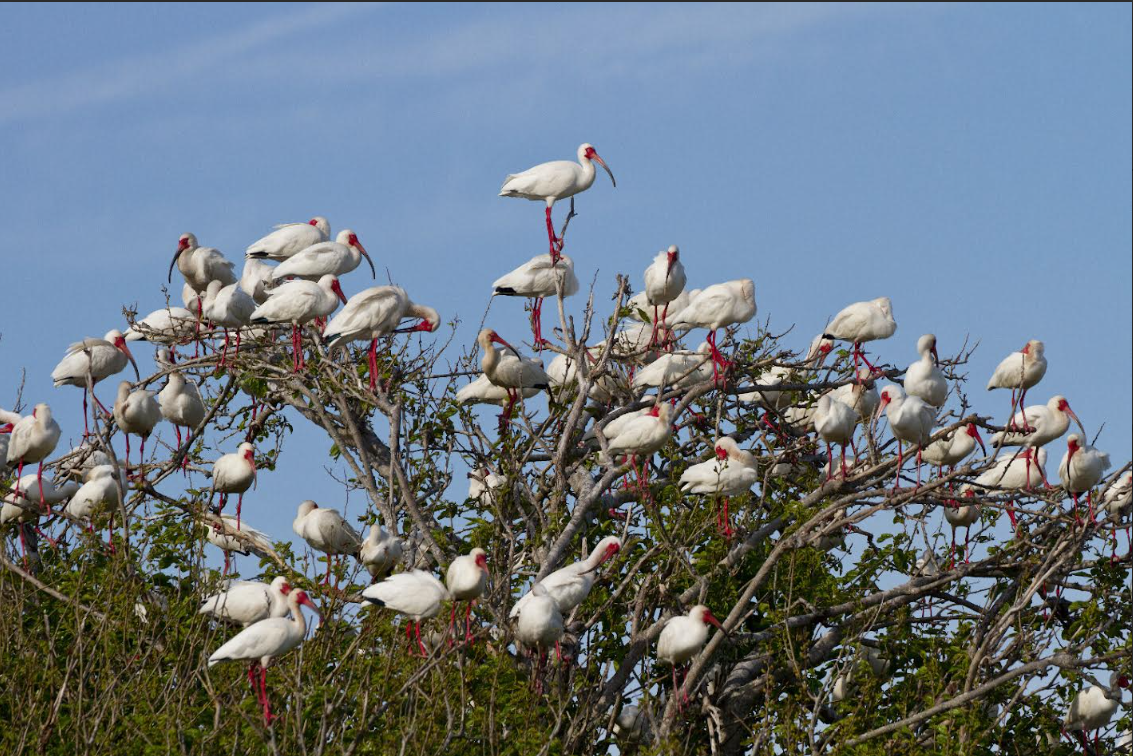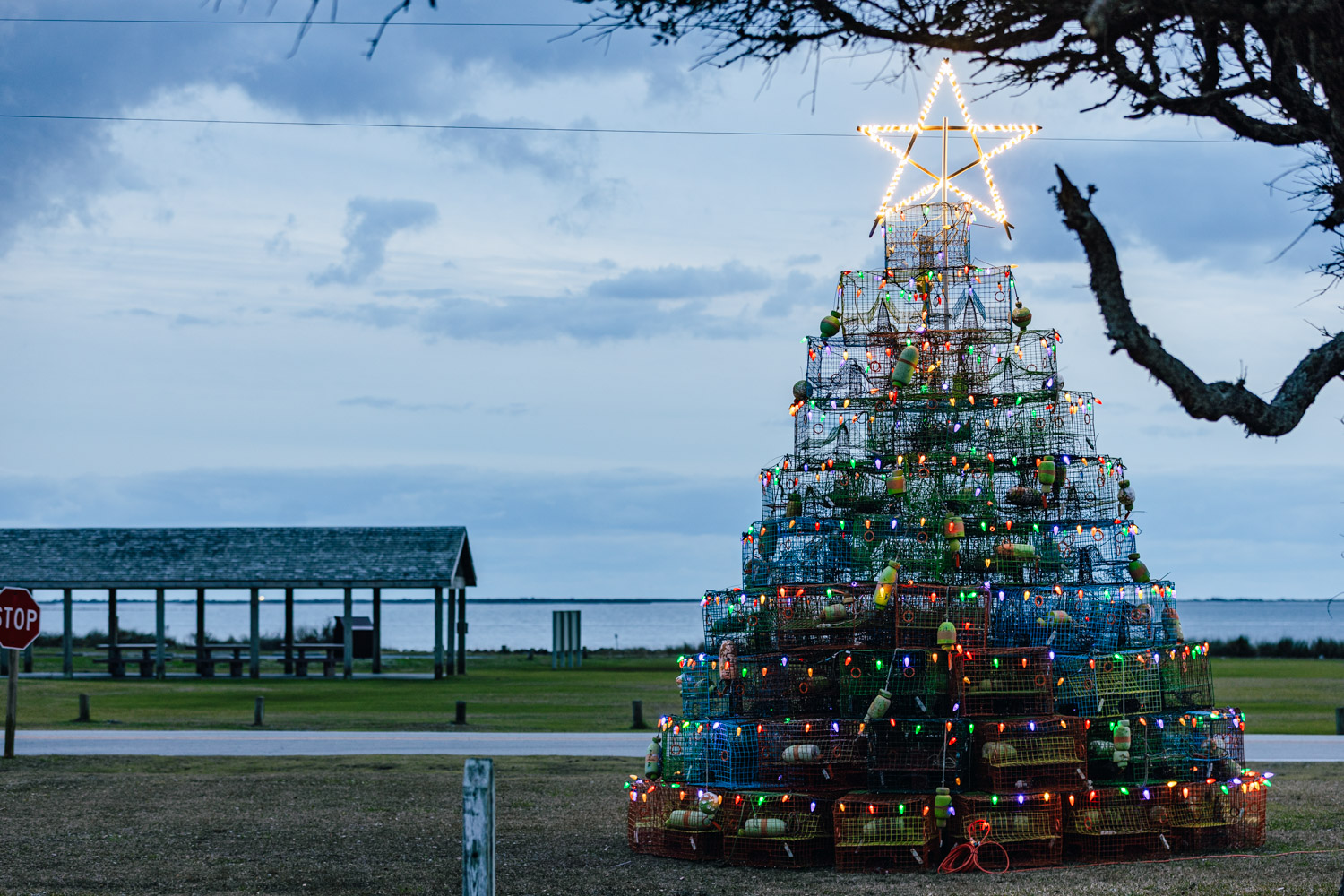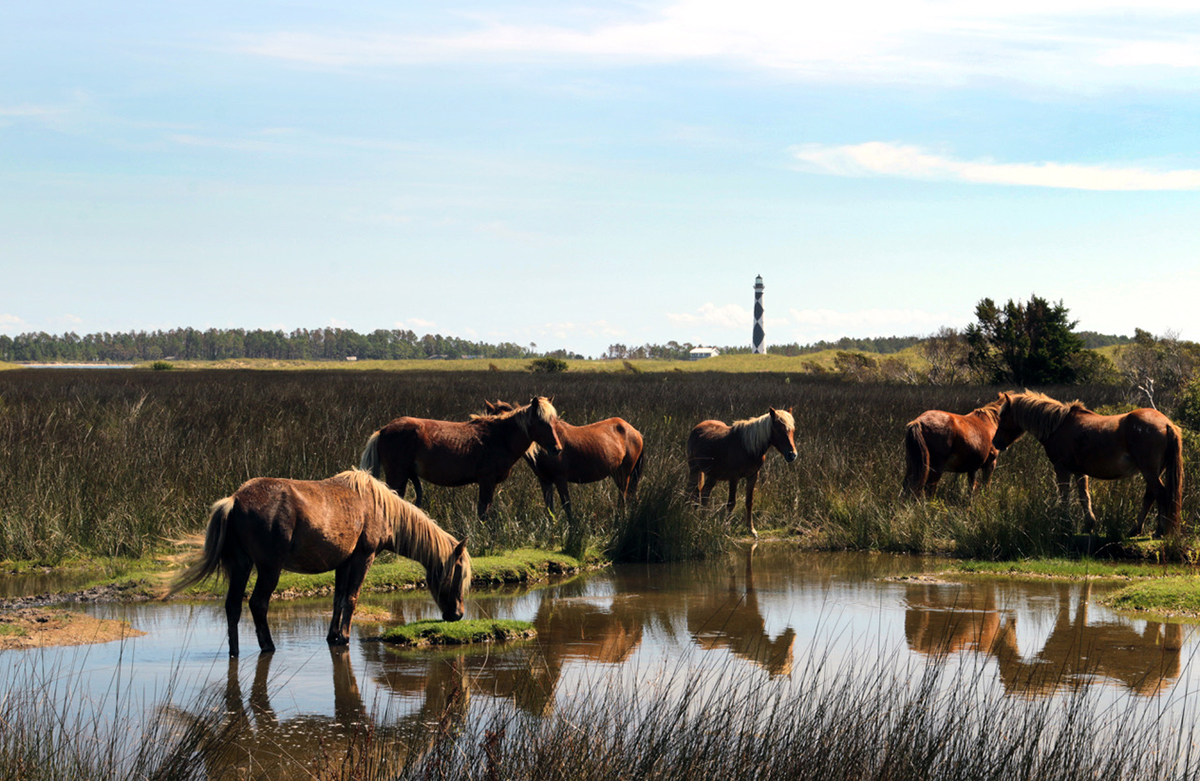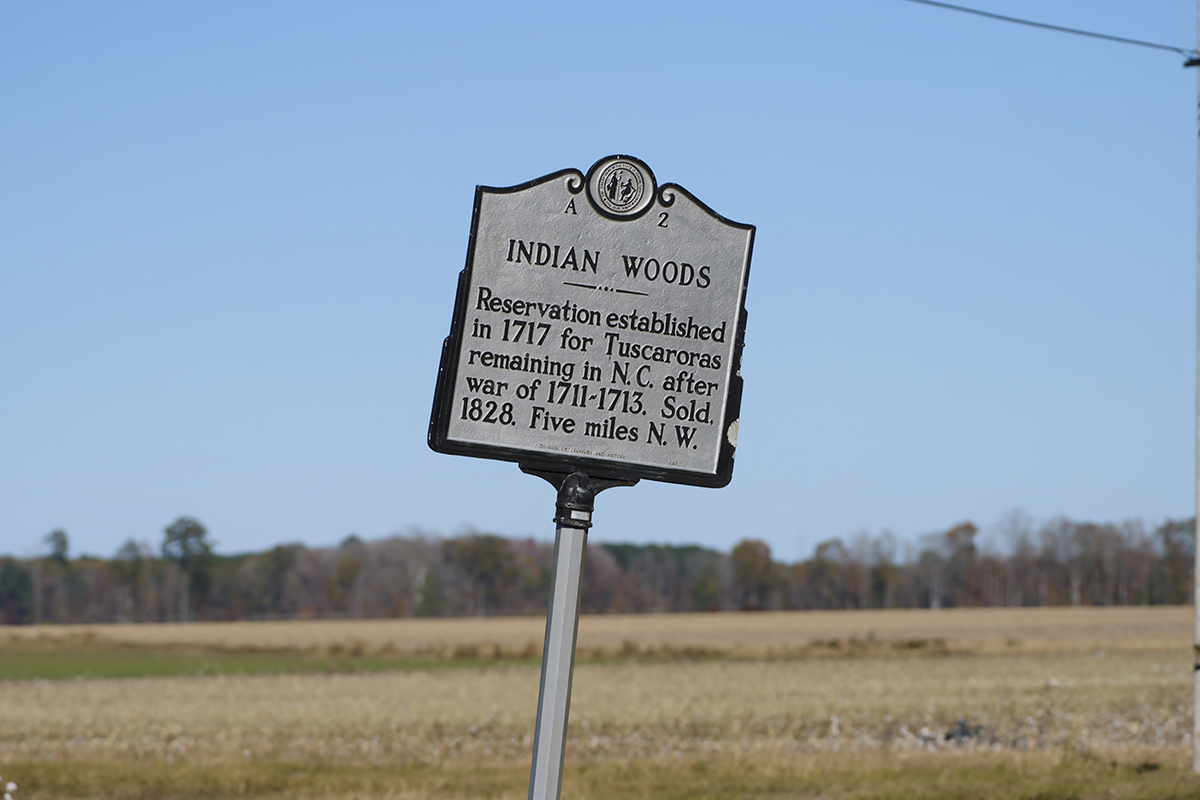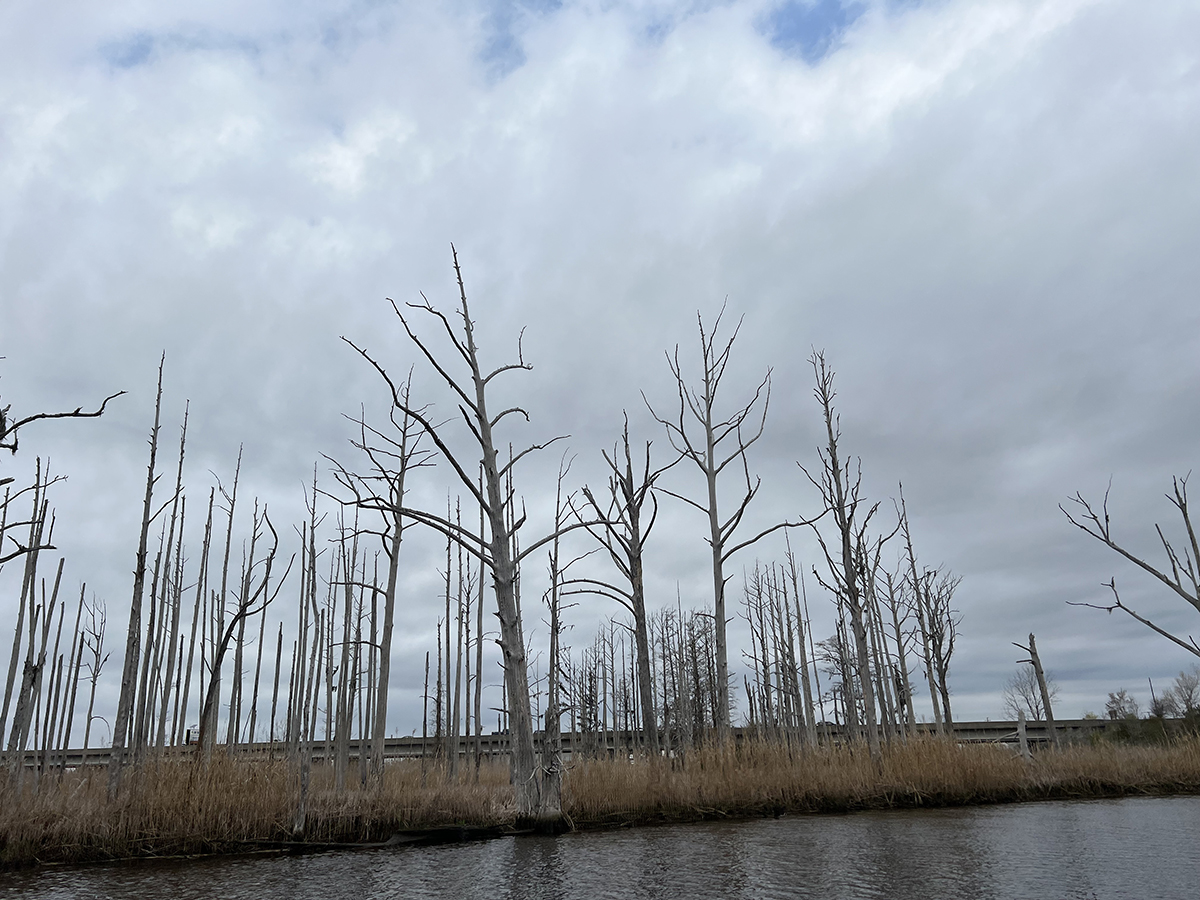
As you near Wilmington for your beach vacation, you take in the classic coastal Carolina scenery — tall longleaf pines, grassy marshes, and the wide Cape Fear River. But then something strange catches your eye: a forest of bare white tree trunks rising from the swamp like a field of bones. The eeriness of this ghost forest — a place where living woods have turned to watery graveyards — leaves you wondering, “What killed all the trees?”
The answer researchers with the University of North Carolina Wilmington found in the boneyard may surprise you.
Supporter Spotlight
For centuries, bald cypress trees thrived on the banks of the Cape Fear River and its tributaries. Bald cypress trees — ancient survivors — are not fragile. These giants can live for thousands of years, stretching to 120 feet tall and standing strong through hurricanes thanks to buttressed roots that prevent the tree from toppling in high winds. An hour away, cypress trees on the Black River are some of the oldest trees in the world with some in Three Sisters Swamp found to be aged at over 2,600 years using tree-ring dating in a 2019 study. But here along the Cape Fear River — like much of the East Coast — many of them are dying and leaving behind ghost forests.
The cost of ghosts
Ghost forests aren’t just spooky. They’re a warning sign. Remote sensing photos from a 2020 paper by Jessica Lynn Magolan and Joanne Nancie Halls show Smith Creek’s freshwater wetlands giving way to salt marsh. Old-growth freshwater swamps are engines of life. They shelter birds, fish and reptiles. They store vast amounts of carbon. Their roots absorb floodwaters, buffering nearby communities when hurricanes roar ashore.
Ghost forests, by contrast, provide little protection. They are markers of loss — loss of biodiversity, of resilience, of time.
And they’re spreading.
Digging into the past
On a warm morning standing in the mud near Smith Creek, graduate student researcher Kendra Devereux of the University of North Carolina Wilmington holds a cylinder of tree core to the light. Each ring tells a story of a year in the tree’s life: how much it grew, whether it was stressed, whether conditions were good or bad.
Supporter Spotlight
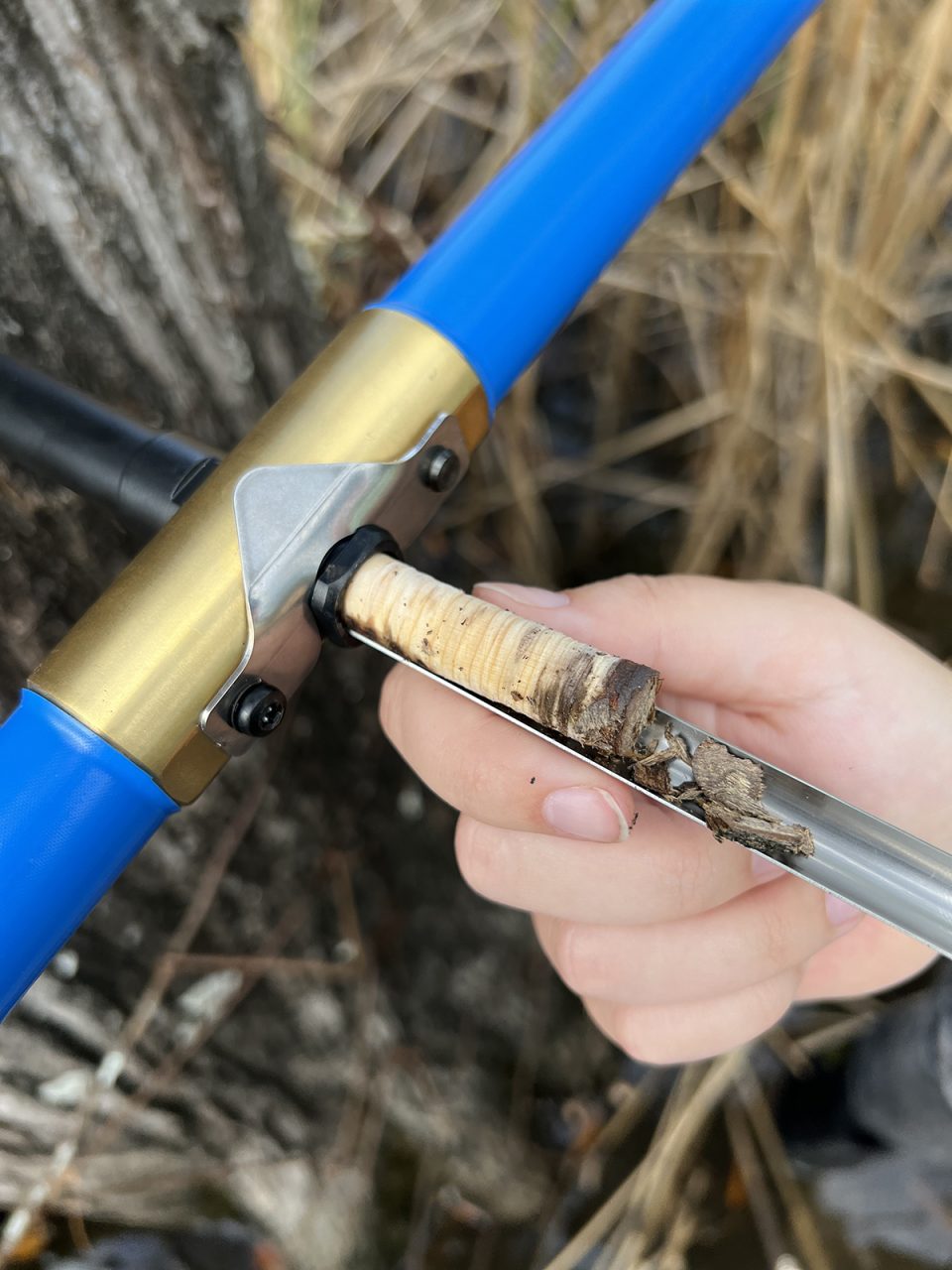
Devereux and her team are piecing together a mystery. Along with her research advisers, Dr. Monica Rother and Dr. Andrea Hawkes, and a team of other collaborators and students, she’s collected tree cores and sediment samples from two sites on Smith Creek, looking for clues hidden in growth rings and in the microscopic remains of creatures. Tiny, fossilized organisms buried in the layers of river mud act like timekeepers, revealing how salty the water was at different points in history. By studying them, the team can reconstruct how salty the water was when they lived.
And the evidence revealed in their report points to what may be a surprising culprit.
A river made deeper
The cypress deaths weren’t just caused by globally rising seas or regular tides. It appears that the trees were undone, in large part, by ongoing dredging.
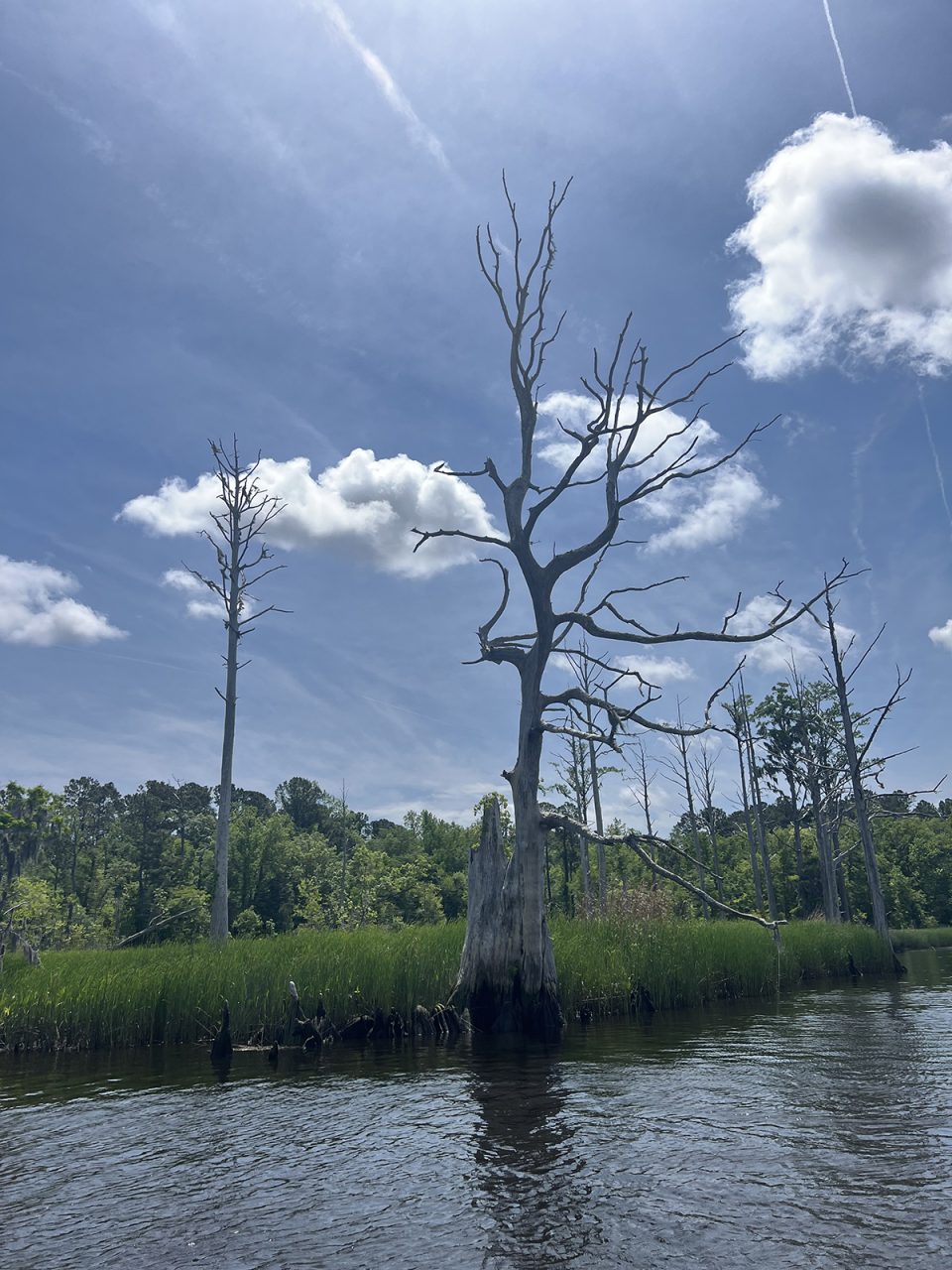
Over the last century, the Cape Fear River was repeatedly deepened to allow bigger ships to reach Wilmington’s port. Each time the channel grew, for example, in 1912, 1930, 1946, 1950, 1970, and from 2000 until 2005, more ocean water pushed upstream, according to a 2011 UNCW study for the Army Corps of Engineers that monitored how deepening the Wilmington Harbor would affect tidal range. Combined with rising sea levels, that extra saltwater slowly crept farther upriver and into tributaries like Smith Creek. Even tiny increases in salt can stress or kill bald cypress trees. For people, it was invisible. For trees, it was deadly.
And the problem may only be exacerbated if the Wilmington Harbor channel is deepened from a depth of 42 feet to 47 feet.
Earlier this month, the Corps released a draft environmental study on the proposed multimillion project, which would permit larger ships to cruise from the mouth of the Cape Fear more than 20 miles up river to the North Carolina Port of Wilmington.
Salt: silent killer
Freshwater has almost no salt. Ocean water is about 3% salt, or about 35 parts per thousand. Bald cypress trees start struggling when there’s just a trace more salt than they’re used to. To put it in kitchen terms, just over a pinch per gallon is enough to start killing them. Older trees, despite their size, seem more vulnerable. Along the saltier stretch of Smith Creek, untold numbers of older trees have died, leaving only snags — the standing skeletons of once-living giants.
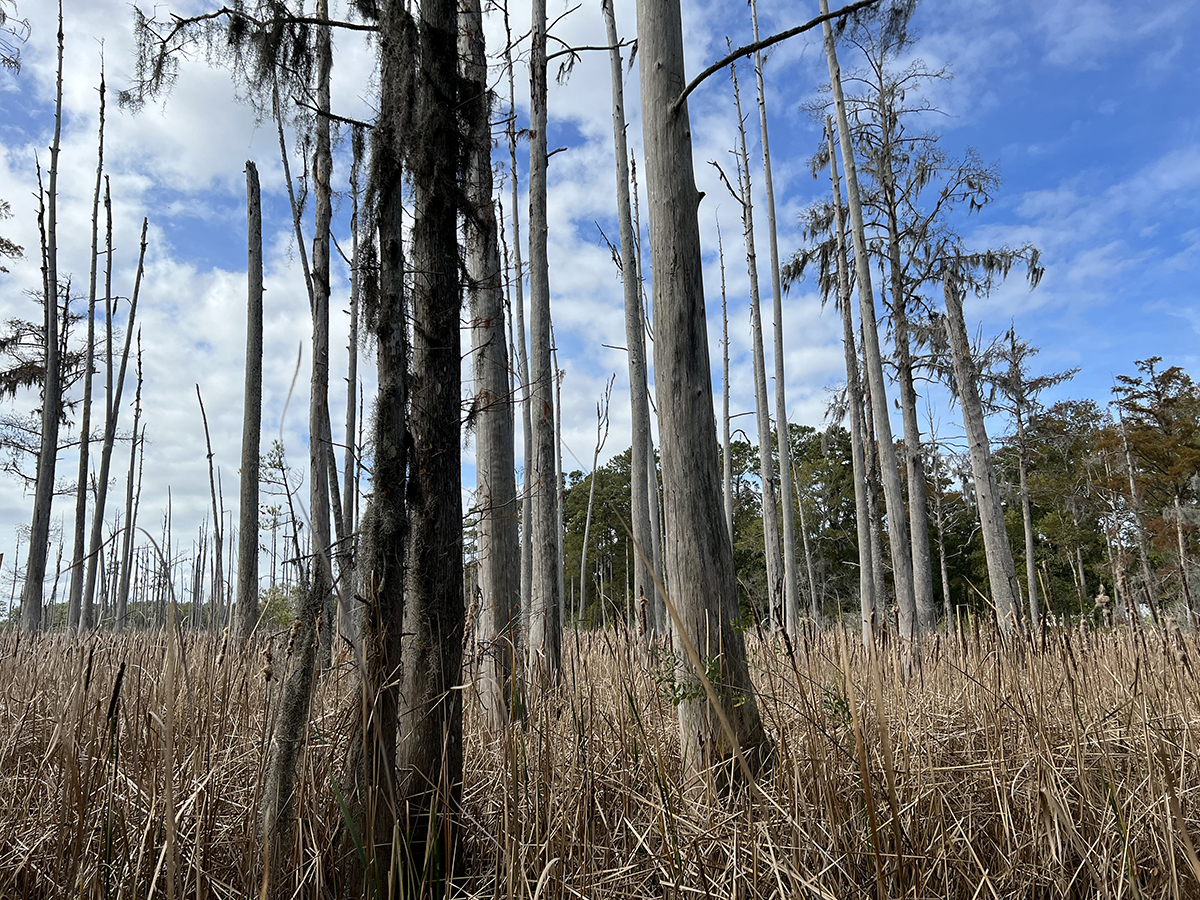
Upstream, where the water is fresher, cypresses are still thriving, with at least one more than 800 years old. But closer to the Cape Fear, trees that have managed to survive amidst the ghost forests show signs of years of stress, with observable ring patterns that coincide with the dates of major dredging projects. In the 1970s, cypress growth was suppressed in the area with high salt. By 2000, whole stretches of trees had died, leaving behind today’s ghost forest.
A warning rising with the tide
As Wilmington faces sea level rise and continued dredging, Rother, Devereux and the other authors found, the salty tide will keep pushing inland. That means more ghost forests, fewer living cypress trees, and greater risk of flooding for the people who call this coast home.
The white skeletons along Smith Creek are more than strange landmarks. They are warnings etched into the landscape, reminders of how human choices and a changing climate can reshape even the hardiest of forests. As Rother explains, “Climate change and sea-level rise will form more ghost forests across the Atlantic and Gulf coasts,” leaving communities with less natural protection from flooding. And with continuing dredging of the Cape Fear River bottom, hurricane-prone Wilmington could face even greater risks.
Next time you cross that bridge, look again. The ghost forest isn’t just haunting the swamp, it’s a warning carved into bone-white silence.

